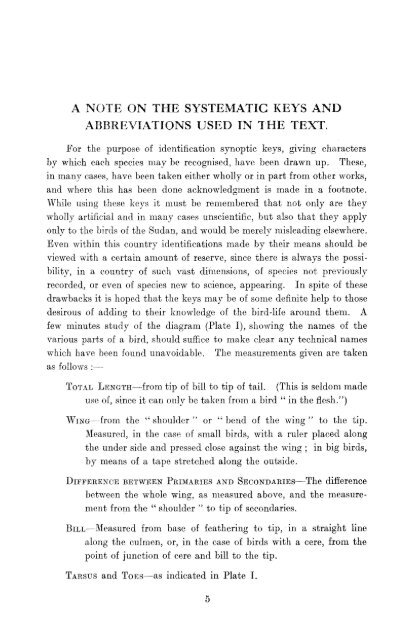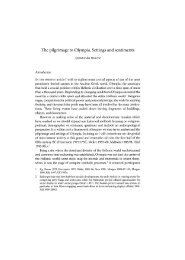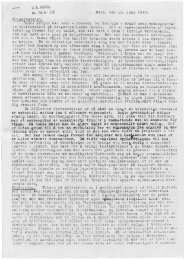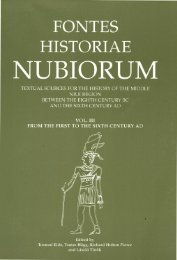SUDAN BIRDS
SUDAN BIRDS
SUDAN BIRDS
- No tags were found...
Create successful ePaper yourself
Turn your PDF publications into a flip-book with our unique Google optimized e-Paper software.
A NOTE ON THE SYSTEMATIC KEYS ANDABBREVIATIONS USED IN THE TEXT.For the purpose of identification synoptic keys, giving charactersby which each species may be recognised, have been drawn up. These,in many cases, have been taken either wholly or in part from other works,and where this has been done acknowledgment is made in a footnote.While using these keys it must be remembered that not only are theywholly artificial and in many cases unscientific, but also that they applyonly to the birds of the Sudan, and would be merely misleading elsewhere.Even within this country identifications made by their means should beviewed with a certain amount of reserve, since there is always the possibility,in a country of such vast dimensions, of species not previouslyrecorded, or even of species new to science, appearing. In spite of thesedrawbacks it is hoped that the keys may be of some defimte help to thosedesirous of adding to their knowledge of the bird-life around them. Afew minutes study of the diagram (Plate I), showing the names of thevarious parts of a bird, should suffice to make clear any technical nameswhich have been found unavoidable. The measurements given are takenas follows :—TOTAL LENGTH—from tip of bill to tip of tail. (This is seldom madeuse of, since it can only be taken from a bird " in the flesh.")WING—from the " shoulder " or " bend of the wing " to the tip.Measured, in the ease of small birds, with a ruler placed alongthe under side and pressed close against the wing ; in big birds,by means of a tape stretched along the outside.DIFFERENCE BETWEEN PRIMARIES AND SECONDARIES—The differencebetween the whole wing, as measured above, and the measurementfrom the " shoulder " to tip of secondaries.BILL—Measured from base of feathering to tip, in a straight linealong the culrnen, or, in the case of birds with a cere, from thepoint of junction of cere and bill to the tip.TABSUS and Tons—as indicated in Plate I.












![AdyfJa'ta (ivavnvt]; yJ..mntxt]; arto 'tO Mrto(itgxo Avxatov](https://img.yumpu.com/46821018/1/185x260/adyfjata-ivavnvt-yjmntxt-arto-to-mrtoitgxo-avxatov.jpg?quality=85)



